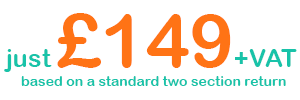A Guide to Self-Assessment Tax Returns

Mastering Your Finances: A Guide to Self Assessment Tax Return
Introduction to self assessment tax return: Navigating the complexities of tax season can be daunting, especially when it comes to self assessment tax returns. Whether you’re a freelancer, small business owner, or self-employed professional, understanding the ins and outs of filing your self-assessment tax return is crucial for financial success. In this comprehensive guide, we’ll delve into key strategies and tips to maximize your tax return efficiency and ensure compliance with tax regulations.
Understanding Self-Assessment Tax Returns: Self-assessment tax returns are a way for individuals to report their income and calculate the amount of tax they owe to HM Revenue and Customs (HMRC). This process is particularly relevant for self-employed individuals, sole traders, partners in partnerships, and company directors who are not subject to Pay As You Earn (PAYE) tax deductions.
Key Steps for Filing Your Self-Assessment Tax Return:
- Gather All Relevant Documents: Before diving into your tax return, gather essential documents such as invoices, receipts, bank statements, and any other financial records related to your income and expenses.
- Register for Self-Assessment: If you’re new to self-assessment, ensure you register with HMRC well before the deadline to avoid penalties.
- Know Your Deadlines: Familiarize yourself with the deadlines for filing your tax return and paying any tax due. Missing deadlines can result in penalties and interest charges.
- Accurate Income Reporting: Report all sources of income accurately, including self-employment earnings, rental income, dividends, and interest.
- Claim Relevant Deductions and Allowances: Take advantage of allowable expenses, tax reliefs, and allowances to minimize your tax liability. Common deductions include office expenses, travel costs, and pension contributions.
- Use Accounting Software: Consider using accounting software or hiring an accountant to streamline the tax preparation process and ensure accuracy.
- Submit Your Tax Return: Once you’ve completed your tax return, submit it online through the HMRC website or via approved software.
- Pay Your Tax Bill: Pay any tax owed by the deadline to avoid penalties and interest charges.
Conclusion: Mastering your self-assessment tax return is a critical aspect of managing your finances effectively. By following the key steps outlined in this guide and optimizing your content for relevant keywords, you can navigate tax season with confidence and maximize your tax return efficiency. Remember to stay informed about tax regulations and seek professional advice when needed to ensure compliance and financial success.
You can find out more by visiting the HMRC website here
Ready to complete your self-assessment tax return? Click here

